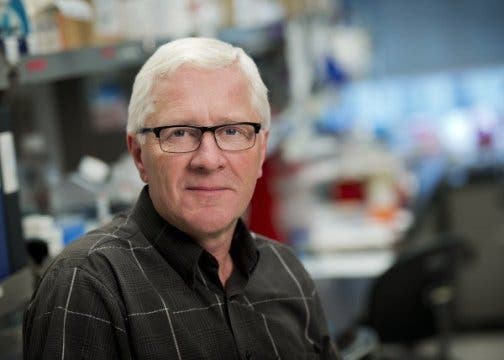Scientists have gathered a completely new understanding of how blood is formed in the body, potentially revolutionizing the dogma standing since the 60s.

Credit: UHN
Blood is an amazing thing; it delivers necessary substances such as nutrients and oxygen to the cells and transports metabolic waste products away from those same cells. It facilitates gas exchange, temperature regulation and contains antibodies, nutrients, oxygen and much more to help the body work – and yet, we still don’t quite know how it forms, as proven by a recent study, which could prove “that the whole classic ‘textbook’ view we thought we knew doesn’t actually even exist,” says principal investigator John Dick, Senior Scientist at Princess Margaret Cancer Centre, University Health Network (UHN), and Professor in the Department of Molecular Genetics, University of Toronto.
Dr. Dick and his team mapped the lineage potential of nearly 3,000 single cells from 33 different cell populations of stem and progenitor cells obtained from human blood samples. They found that blood forms directly from stem cells.
“Instead, through a series of experiments we have been able to finally resolve how different kinds of blood cells form quickly from the stem cell — the most potent blood cell in the system — and not further downstream as has been traditionally thought,” says Dr. Dick, who holds a Canada Research Chair in Stem Cell Biology and is also Director of the Cancer Stem Cell Program at the Ontario Institute for Cancer Research.
This is an important finding not only scientifically – it could improve and personalize the treatment of millions.
“Our discovery means we will be able to understand far better a wide variety of human blood disorders and diseases — from anemia, where there are not enough blood cells, to leukemia, where there are too many blood cells. Think of it as moving from the old world of black-and-white television into the new world of high definition.”
This discovery builds on Dr Dick’s research in 2011, also published in Science, when the team isolated a human blood stem cell in its purest form and through which they managed to recreate the entire blood system.
“Four years ago, when we isolated the pure stem cell, we realized we had also uncovered populations of stem-cell like ‘daughter’ cells that we thought at the time were other types of stem cells,” says Dr. Dick. When we burrowed further to study these ‘daughters’, we discovered they were actually already mature blood lineages. In other words, lineages that had broken off almost immediately from the stem cell compartment and had not developed downstream through the slow, gradual ‘textbook’ process. So in human blood formation, everything begins with the stem cell, which is the executive decision-maker quickly driving the process that replenishes blood at a daily rate that exceeds 300 billion cells.”
He and his team has been working on this for 25 years to understand the cellular processes through which blood regenerates and integrates transplantation and transfusion, and now, it seems like they’ve finally made the breakthrough.






